Asbestos-Ceiling Tiles
6 Easy Steps to tell if ceiling tiles are likely to contain asbestos
- POST a QUESTION or COMMENTabout how to identify ceiling tiles that contain asbestos
InspectAPedia tolerates no conflicts of interest. We have no relationship with advertisers, products, or services discussed at this website.
Asbestos-containing ceiling tiles:
Some but not all old ceiling tiles contain asbestos.
Here we discuss how to recognize & handle ceiling tiles that may contain asbestos. We describe the appearance, ingredients, years of manufacture, history, and producers of various types of ceiling tiles & coverings as an aid in determining whether or not a particular ceiling covering or tile is likely to contain asbestos.
This document assists building buyers, owners or inspectors who need to identify asbestos materials (or probable-asbestos) in buildings by simple visual inspection.
We provide photographs and descriptive text of asbestos insulation and other asbestos-containing products to permit identification of definite, probable, or possible asbestos materials in buildings.
We also provide a MASTER INDEX to this topic, or you can try the page top or bottom SEARCH BOX as a quick way to find information you need.
Asbestos-containing Ceiling Tiles: Examples of materials that might contain asbestos fibers
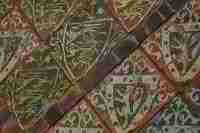 Asbestos may have been used in the ceiling tile tiles and in lay-in ceiling tiles in suspended ceilings in the tile body or in paper facing or backing on the ceiling tiles; asbestos was also a common ingredient in some mastic adhesives used for glue-up application of ceiling tiles.
Asbestos may have been used in the ceiling tile tiles and in lay-in ceiling tiles in suspended ceilings in the tile body or in paper facing or backing on the ceiling tiles; asbestos was also a common ingredient in some mastic adhesives used for glue-up application of ceiling tiles.
Asbestos-containing ceiling tiles are not considered friable but are soft enough that unnecessary sampling or disturbance may release asbestos dust and particles.
In addition, some ceiling tiles such as used in suspended ceilings may be holding a collection of asbestos-containing dust and debris (from other sources) on the hidden upper side of the tile.
In these articles we explain how to recognize and handle asbestos-suspect ceiling tiles or other ceiling or wall or building sheathing products.
[Click to enlarge any image]
Photo above: an encaustic heraldic tile used on the ceiling at Cleve Abbey, Cleeve Abbey ceiling tiles, dating from the middle ages, late in the twelfth century. Cleve abbey, a Cistercian monastery was, in 1536, converted by Henry VIII to a country house as part of the dissolution of the monasteries. - Wikipedia. T
hese are ceramic tiles, not an asbestos product.
6 easy steps to make a guess at asbestos hazard from unknown ceiling tiles
- Look at the ceiling tile material:
Some ceiling tiles or suspended ceiling drop-in panels are quite-obviously made of fiberglass - by visual inspection.
While it is not possible to identify all forms of asbestos by mere visual inspection, it is possible to identify some materials that are definitely not asbestos.
Fiberglass, like that in our photo shown here, is not an asbestos product. If your ceiling tile is homogeneous fiberglass it is not likely to contain asbestos unless by cross-contamination from another asbestos source.
Watch out: however the presence of fiberglass fibers as an ingredient in some products does not allow us to rule-out the presence of asbestos as well. Fiberglass and asbestos were combined in some products, particlarly fabrics and yarns.
See details at FIBERGLASS ASBESTOS COMBINATIONS - Manufacturerer's stamps or data on packaging:
Look for any evidence of the manufacturer: a stamp on the back of a tile, packaging left-over, records of the installation.
Often one can infer the date of manufacture of a product by ancillary stamps or statements such as compliance with laws or standards whose initial date is known. - Age of building:
Next consider the age of the home as a floor under the maximum age of the ceiling. If the building age is newer than the last date of use of asbestos in your country that can provide a credible "no asbestos" conclusion for the material in question. - Age of the ceiling itself:
Next consider the age of the ceiling, e.g. dates or records of renovations - for the same reason given in the question above.
Date threshold: If the ceiling was installed in the U.S. after the mid-1980's its not at all likely to contain asbestos. - Manufacturer statements: If the ceiling is one of the manufacturers who assert their products never contained asbestos or who give specific dates after which production of asbestos-containing ceiling tiles ceased.
Keep in mind that a ceiling installed shortly after that production date could still contain asbestos if new old stock asbestos-containing ceiling tiles were used. - Test the material: If you know nothing about the ceiling and can not remove it without making a dusty (and potentially hazarous) mess, the you may want to have a sample tested.
Chrysotile asbestos, one of the most commonly-used asbestos fibers, was used in production of some ceiling materials. Amosite asbestos, also a widely-used form of asbestos, was used in some ceiling tiles as well as in roof and floor tiles.
Crocidolite asbestos was also used in ceiling tile production. Ceilings were also covered with cement-asbestos products as a fire barrier in boiler rooms and similar locations.
Dates of Ceiling Tiles: age, appearance, types, materials, manufacturers help ID use of Asbestos
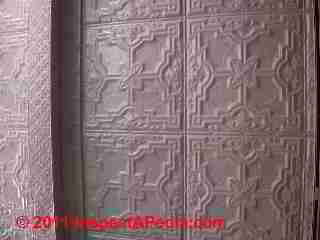 Certainly not all ceiling tiles contain or ever contained asbestos. Knowing the the history of ceiling tiles and their various ingredients, combined with the size, brand (usually unknown), visual appearance and location of ceiling tiles, and adding the age of the building or of the ceiling tile installation itself can often quickly decide whether special handling or further investigation is warranted when demolishing, remodeling, or otherwise disturbing a ceiling.
Certainly not all ceiling tiles contain or ever contained asbestos. Knowing the the history of ceiling tiles and their various ingredients, combined with the size, brand (usually unknown), visual appearance and location of ceiling tiles, and adding the age of the building or of the ceiling tile installation itself can often quickly decide whether special handling or further investigation is warranted when demolishing, remodeling, or otherwise disturbing a ceiling.
But asbestos fibers were used in some acoustic asbestos ceiling tiles, often amphibole asbestos such as amosite, crocidolite, anthrophylite, tremolite, and actinolite, with amosite among the most commonly-found.
Modern ceiling products do not contain asbestos.
Watch out: During any construction, demolition, or building remodeling project, as dust and particles from many materials, even paper and wood can be irritating or harmful to workers and occupants, prudent procedure would include appropriate dust control, personal protection equipment, and cleaning methods.
- Ancient: Medieval era: "acoustic" ceiling tiles were installed at the Cleeve Abbey,England. Image above left, Wikimedia Commons [12] and shown at the start of this article.
Mediterranean homes: terra cotta tiles set across wood ceiling framing, over which roofing tiles were installed.[12] Modern sizes: 2' x 2' or 2' x 4' including panels for suspended ceilings. - 1790: plaster ceilings, plaster applied to wood lath
- 1860: founding of Armstrong Corporation. "Corkboard led to fiberboard, fiberboard led to ceiling board, cork tile and linoleum led to vinyl floors." [13]
- 1885: beginning in Brooklyn tin or aluminum ceilings were popularized in North America, replacing ornate plaster work or used to cover cracked, damaged plaster ceilings.
"Tin ceilings, consisting of painted, embossed tin plate panels are almost uniquely North American, although they were introduced into Australia and South Africa in the late 19th century."[13][15]
Aluminum ceiling tiles & panels were also produced at about the same time.
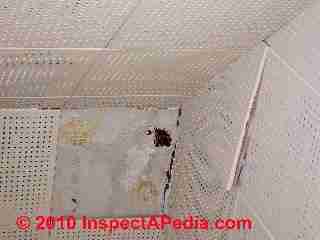
- 1953: National Gypsum recommends acoustic plaster mixers wear respirators
- 1967: U.S. Gypsum ceiling tiles, reported produced using ingredients that included asbestos from 1967-1976[29]
- 1970: The Celotex Corporation of America introduced an isocyanurate foam ceiling tile [11] (not an asbestos-containing product). Asbestos widely used as fireproofing in roofs, floors, ceilings.[28]
(CELOTEX ASBESTOS PRODUCTS) - 1999: US EPA Asbestos Materials Bans: Clarification. This document makes clear that EPA has no existing bans on asbestos-containing products other than items listed in this document: ACM ceiling tiles were not banned.
Note: however because of public resistance to purchase or use of ACM products, many manufacturers discontinued of asbestos in various products, particularly after 1976. Check the individual product MSDS for confirmation of its content. - Ed. In this year Great Britain banned the sale or re-use of white asbestos. [26] - See ASBESTOS MATERIAL REGULATIONS for a history of asbestos bans, regulations, laws
While an expert lab test using polarized light microscopy may be needed to identify the specific type of asbestos fiber, or to identify the presence of asbestos in air or dust samples, many asbestos-containing building products not only are obvious and easy to recognize, but since there were not other look-alike products that were not asbestos, a visual identification of this material can be virtually a certainty in many cases.
Which ceiling tile brands are reported to have contained asbestos? Which ceiling tiles are asbestos free?
Insulating board panel and ceiling tile and panel manufacturers produced a range of products, many of which may contain asbestos, but other ceiling and wall covering & building sheathing products made of organic fibers, wood fibers, cane fibers generally do not contain asbestos.
Our photo (above) shows an antique plaster and lath ceiling in a pre-1900 home.
Asbestos was used in ceiling products at least as early as the 1800's and continued into the 1980's or possibly later depending on the country of origin or use of these products.
List of Ceiling Tile Manufacturers noting those that did or did not produce ceiling products containing asbestos
Manufacturers whose ceiling tiles were known to contain asbestos or are likely to contain asbestos are indicated in bold font in the list below.
- Affa Tile Company - supplier of terra cotta ceiling tiles [24]
- Armstrong ceiling tiles & suspended ceilings do not and have not ever contained asbestos.
See ARMSTRONG CEILING TILES - Boise Cascade ceiling tiles & other building products - Asbestos was used in some Boise Cascade products such as gaskets and asbestos sheeting; as of 9/11/2017 we have not found an authoritative source asserting that these ceiling tiles contained asbestos
See BOISE CASCADE CEILING TILES - BPB ceiling products - [asbestos use not confirmed, dates pending - Ed.][23] BPB purchased Celotex's ceiling products and drywall (gypsum board) product operations in 2000.
- Capul Brand suspended ceilings - [asbestos use not confirmed, dates pending - Ed.]
- Carey Canada, a Celotex subsidiary, mined and processed asbestos fibers and materials for use in some Celotex products.
- Celotex Brand ceiling tiles - [confirmation of asbestos use & dates pending - Ed.]
Asbestos was used in some Celotex products and/or may appear in some Celotex products such as cellulose-based insulating board depending on when and where the product was manufactured.
Celotex was reorganized in 1997. See BPB notes above.
Celotex continues to operate in the U.K. selling polyisocyanurate insulating wallboard, not an asbestos product.
See CELOTEX CEILING TILES
Also see CELOTEX ASBESTOS PRODUCTS
- Chicago Metallicsuspended ceilings - [asbestos use not confirmed, dates pending - Ed.]
- Chinese ceiling tile product manufacturers, various; - [asbestos use not confirmed, dates pending - Ed.]
Note: tracking down the manufacturer of a ceiling tile product made in China can be difficult.
Our research (6/30/12) found more than 150 companies in China listed as producing ceiling tiles & coverings for export, using a wide range of materials including aluminum, calcium silicate, fiber cement [??], magnesium oxide, plastic, PVC (most widely used), acoustic materials, gypsum, mineral fibers, plasterboard, veneer-faced OSB panels, MDF, melamine-faced medium-density fiberboard MDF, chipboard, hardboard & similar wood products, porcelain tile, polycarbonate, and more.[25] - Domtar Ceiling Tiles, see DOMTAR CEILING TILES
- Flintkote - asbestos was used in at least some Flintkote products.
See FLINTKOTE ASBESTOS PRODUCTS GUIDE - FRF - see FRF CEILING TILES
- Gyptone brand ceiling tiles - [confirmation of asbestos use & dates pending - Ed.]
- Johns Manville Corporation Ceiling & Wall Paneling & Tiles - produced a range of products that contained asbestos; [confirmation of asbestos use & dates pending - Ed.]
See JOHNS MANVILLE CEILING WALL PANELS - National Gypsum Gold Bond - some products such as National Gypsum Gold Bond ceilling tiles packaging describe the product as "wood fiber ceiling tiles".
See details at NATIONAL GYPSUM CEILING TILES
[confirmation of asbestos use & dates pending - Ed.] - OWA ceiling products -
See our discussion of OWA ceiling tiles and panels
at OWA CEILING TILES - Owens Corning Fiberglass Ceiling Tiles - [confirmation of asbestos use & dates pending - Ed.]
- Sears Roebuck Ceiling Tiles:
see SEARS ROEBUCK CEILING TILES - Sheres Ceiling Tiles made in Canada
See our discussion of Sheres at
SHERES CEILING TILES - Simpson Forestone Fissured Woodfiber Acoustical tile - reader correspondence with the company indicated that this product did not contain asbestos.
See SIMPSON CEILING TILES - United States Gypsum (USG) Ceiling Tiles - contained asbestos, 1967-1976 and possibly as late as USG ceiling tiles manufactured in 1981
See details at US GYPSUM CEILING TILES
Ceiling Tiles That Do Not Contain Asbestos
The ceiling tile products listed below have been confirmed to be asbestos free.
Older Ceiling Tiles that Did Not Contain Asbestos
- Armstrong Ceiling tiles: according to the company, Asbestos, in any form, is not and never has been used in the manufacture of Armstrong ceiling tiles. - source: Armstrong U.K.,
FAQs - OTHERS TECHNICAL SUBJECT [PDF article] retrieved 2016/06/14, original source: http://www.armstrong.co.uk/commclgeu/eu1/uk/gb/FAQ_other.html
also contact: Armstrong World Industries 2500 Columbia Avenue Lancaster, PA PH - 877 276 7876, option 1,2,3 Fax- 800-572-8324
Modern Ceiling Tiles Do Not Contain Asbestos
Modern ceiling products do not contain asbestos. Using Certainteed as an example, [www.certainteed.com] you can obtain an MSDS (Material Data Safety Sheet) for each of the company's products.
Common modern ceiling product ingredients include fibrous glass wool, urea formaldehyde resin, and fiberboard products contain slag wool, starch, cellulose [wood fibers], perlite, crystalline silica, and clay.
Watch out: It's worth noting that even modern building products can present health hazards if they are not handled properly. For example crystalline silica can cause nose, throat, and lung irritation. [6]
How to Recognize Asbestos suspect ceiling tiles
Some acoustic ceiling tiles contain asbestos. If renovation is planned it may be smart to simply handle this material as if it contained asbestos particles.
In these photographs of older square ceiling tiles the photo (below left) shows a smooth ceiling tile and the second photo (below right) an acoustic ceiling tile with its characteristic pattern of holes.
Both of these products might contain asbestos fibers, though the principal material is usually cellulose.
The larger suspended ceiling segment, 2'x4' in size (photo above right), was pushed aside to show the older layers of ceiling materials above.
The suspended ceiling tile, if made of fiberglass or cellulose is not a likely asbestos fiber source.
Our concern in this particular instance was that the entire cavity above the suspended ceiling was being used as an air conditioning return air plenum, exposing all of the building HVAC system and occupants to whatever particles were released by materials in the cavity, including possibly asbestos from the older layer of acoustic ceiling tiles.
The remediation contractor removed all of these layers to expose (and clean) the concrete ceiling above prior to installing a new suspended ceiling.
More Asbestos-Suspect Ceiling Tile Photographs
Our perforated acoustic ceiling tile photo above shows that these particular asbestos-containing ceiling materials were also sometimes applied to a vertical wall.
Below we show a different pattern of asbestos-suspect ceiling tiles found in a government building we examined in Poughkeepsie, NY.
As you can see from the photographs shown here, these acoustic ceiling tiles over a wet area can support mold growth.
Also see MOLD INFORMATION CENTER.
List of Materials Used to Produce Ceiling Tiles & Ceiling Coverings
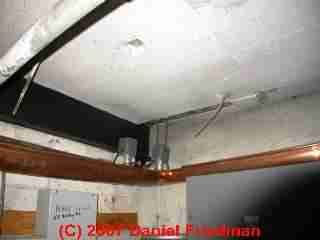
We moved this list to CEILING TILE MATERIALS - separate article.
Also see CEILING FINISHES INTERIOR
Our photo (left) shows tremolite asbestos panels glued to the ceiling over a basement of a commercial building in White Plains, New York.
Tremolite asbestos panels were used as a fire-proofing over a boiler room and where other heating equipment was installed.
See ASBESTOS FIREPROOFING SPRAY-On Coatings for photos of dangerous tremolite asbestos ceiling panels and photos of spray-on asbestos fireproofing coatings.
Also see CEILING FINISHES INTERIOR
and see ASBESTOS DUCTS, HVAC a field identification guide to visual detection of asbestos in and on heating and cooling system ducts and flue vents.
Also see Micro-Photographs of Dust from the World Trade Center collapse following the 9/11/01 attack. Links to U.S. government and other authoritative research and advice are included.
Ceiling Tile Asbestos Content Identification Requests, Questions, Photos, Comments
Reader Q&A - also see the FAQs series linked-to below
 Additional asbestos-in-ceiling tiles questions and replies are at ASBESTOS CEILING TILE FAQs - questions and answers posted originally at the bottom of this page.
Additional asbestos-in-ceiling tiles questions and replies are at ASBESTOS CEILING TILE FAQs - questions and answers posted originally at the bottom of this page.
[Click to enlarge any image]
On 2020-05-25 - by (mod) - test ceiling tiles not likely to contain asbestos - reduce worry = less health risk
Looks like a cellulose or wood fiber product.
Worry is its own health hazard; so for your own peace of mind you should have a sample tested.
See ASBESTOS TESTING LAB LIST for access to certified asbestos testing labs
(We have no financial, business, nor other connection with any product or service.)
Let me know what you're told. - Photos above & below.
See ASBESTOS TESTING LAB LIST for access to certified asbestos testing labs
(We have no financial, business, nor other connection with any product or service.)
Let me know what you're told. - Photos above & below.
On 2020-05-25 by Ryan
Removed ceiling tiles from older home. Disclosure and inspection indicated no asbestos but now I am paranoid about the tiles. They look like a wood based product that is relatively newer but I want to be sure. Should I get them tested?
On 2020-05-20 - by (mod) - cellulose or wood-based product but can't be certain that it contains no asbestos
Sue
That looks like a cellulose or wood-based product but I can't be certain that it contains no asbestos. You would need to either identify the manufacturer and product or have a sample tested by a certified asbestos test lab. If you search inspectapedia. Com for asbestos test Labs you will find directories of that service
That looks like a cellulose or wood-based product but I can't be certain that it contains no asbestos. You would need to either identify the manufacturer and product or have a sample tested by a certified asbestos test lab. If you search inspectapedia. Com for asbestos test Labs you will find directories of that service
On 2020-05-20 by Sue - edge view of cellulosic ceiling tile, acoustic, perforated
The edge close up
On 2020-05-20 02:46:42.705427 by Sue
We weren't planning to remove this ceiling tile, but when removing crown molding to strip wallpaper we noticed the edges of the tile are crumbling, and chunks come off as the wallpaper is removed. It's not a dropped ceiling, just acoustic tile with small holes in it.
We have no idea when it was put in, but the room decor is 60s-80s. Does this look like asbestos tile to you?
On 2020-05-16 - by (mod) - wood fiber product which would not be asbestos
That looks like a wood fiber product which would not be asbestos but from a mere photo one cannot be certain.
With no other information our options are for you to take a look at the questions posed in the article above on this page about the probability that your ceiling tile contains asbestos, or to treat the material is presumed to contain asbestos or to have a sample tested.
With no other information our options are for you to take a look at the questions posed in the article above on this page about the probability that your ceiling tile contains asbestos, or to treat the material is presumed to contain asbestos or to have a sample tested.
On 2020-05-16 by Alisa - tongue and groove wood-fiber like ceiling tile, no date
These are tongue and groove Square ceiling tiles, no idea the date. Asbestos?
On 2020-05-14 - by (mod) - 2'x2' and 2' x 4' ceiling tiles
That looks like a paper or cellulose material, but I can't bet your health and money on a photo. I'd have a sample tested,
OR
treat the material as presumed to contain asbestos, bag it, dispose of it as construction waste (local laws vary), and then damp wipe and HEPA vac the remaining dust so as to put yourself at ease.
OR
treat the material as presumed to contain asbestos, bag it, dispose of it as construction waste (local laws vary), and then damp wipe and HEPA vac the remaining dust so as to put yourself at ease.
2ft x 4ft ceiling tiles are likely to be a more-modern drop-in suspended ceiling tile
On 2020-05-14 by Courtney
Close up of the broken tiles
We recently bought a house built in 1895, but clearly last decorated in the 60s-80s. Shortly before we moved in two drop ceilings were removed (not by us) and I'm worried about residual dust in case of asbestos, especially because we have children and the place has clearly not been cleaned at all.
The tiles are still sitting in our garage. They have no manufacturers marks on the backs
. There are two sizes 2' x 2' and 2'x4'. Do you think these are likely to contain asbestos?
On 2020-05-11 - by (mod) - brown wood-fiber-like appearance, is probably a cellulose (not asbestos) ceiling tile
Andrew
The ceiling tile, because of its brown wood-fiber-like appearance, is probably a cellulose (not asbestos) product,
but
Without a lab test or knowing the specific brand and product ID, to be careful I must say treat the ceiling as presumed to contain asbestos or have a sample tested.
The ceiling tile, because of its brown wood-fiber-like appearance, is probably a cellulose (not asbestos) product,
but
Without a lab test or knowing the specific brand and product ID, to be careful I must say treat the ceiling as presumed to contain asbestos or have a sample tested.
On 2020-05-11 by Andrew - photo of 1960s acoustic ceiling tile, rough surface
wondering if these drop down ceiling tiles could have asbestos. I already sent away from the test kit, but wanted to feel better sooner if possible. I have lived in this space in question for 20 years and there has been a lot of work and activity which on occasion would cause damage to the tiles and break them.
This happened yesterday and scattered debris all over my desk and belongings. The house is 1960's but we are not sure when the ceiling itself was done. We have been in the house since '84. Thank you, thank you, thank you!
On 2020-05-11 by Andrew - I did not even know ceiling tiles could have asbestos
Hey, I am wondering if these ceiling tiles could possibly have asbestos. I have the test kit on the way to me, but I want to feel better if possible. I have lived in this space for years and had a lot of activity where tiles have broken open and been damaged spraying their particles.
I did not even know ceiling tiles could have asbestos so this is more than a little troubling. The house was built in the 60's and we are not sure if the drop down was part of a remodel later or not. We have owned the house since '84.
On 2020-04-20 by Alex N
It does look like a wood based product, would these be considered acoustic tiles since they have the holes in them? And we’re wood fiber acoustic tiles known to have asbestos content?
On 2020-04-20 - by (mod) - fiberboard or cellulose material ceiling tile
I don't know, Alex,
But that small area of damaged ceiling tile shows what looks like fiberboard or cellulose material. (That would be a wood fiber based product).
But that small area of damaged ceiling tile shows what looks like fiberboard or cellulose material. (That would be a wood fiber based product).
Asbestos in those products is possible but not common.
On 2020-04-20 by Alex N
Wonder if you these ceiling tiles contain asbestos, don’t want to mess with to see back of tile. No spares around either, house was built in late 50’s, tiles are in basement not sure when they were installed.
On 2020-04-14 - by (mod) -
On 2020-04-14 by Riles
Would these contain asbestos?
On 2020-02-27 - by (mod) - USG Ceiling tiles: A 0308111842 USG C0 (or possible a Q) 3 5. It also has a sticker that says Fifth Ave 280
Looks like a US Gypsum product, Keisha.
See details at US GYPSUM CEILING TILES
Also you can make a reasonable guess at the asbestos question by seeing
DO THESE CEILING TILES CONTAIN ASBESTOS?
See details at US GYPSUM CEILING TILES
Also you can make a reasonable guess at the asbestos question by seeing
DO THESE CEILING TILES CONTAIN ASBESTOS?
On 2020-02-27 by Keisha
I could use some help!
I am trying to determine is the following ceiling titles have asbestos.
The number on the back are:
A 0308111842 USG C0 (or possible a Q) 3 5. It also has a sticker that says Fifth Ave 280
I am trying to determine is the following ceiling titles have asbestos.
The number on the back are:
A 0308111842 USG C0 (or possible a Q) 3 5. It also has a sticker that says Fifth Ave 280
On 2020-02-26 - by (mod) - probable soft fiberglass, plastic-surfaced suspended ceiling tiles
Mike
With no information whatsoever I can't make a reasonable guess about asbestos in your ceiling tiles. You might know more by taking a look at the ceiling tile (these look like drop-in suspended ceiling sections) edge and back surface.
With no information whatsoever I can't make a reasonable guess about asbestos in your ceiling tiles. You might know more by taking a look at the ceiling tile (these look like drop-in suspended ceiling sections) edge and back surface.
But from your **description** of soft and pliable and from seeing those strips that suggest theser are drop-in suspended ceilint tiles, I suspect the ceiling tiles are plastic-surfaced fiberglass rectangular ceiling tiles.
Please see the easy Q&A at DO THESE CEILING TILES CONTAIN ASBESTOS?
as that will let you make a reasonable guess
Please see the easy Q&A at DO THESE CEILING TILES CONTAIN ASBESTOS?
as that will let you make a reasonable guess
On 2020-02-26 17:36:04.774299 by Mike
Are these asbestos ceiling tiles? Soft pliable
On 2020-02-19 - by (mod) - asbestos in 1972 ceiling tiles?
That looks to me like some type of cellulose or wood product fiberboard.
On 2020-02-19 by Wondering if this is asbestos
I tore down this ceiling without even considering that it might be asbestos. I believe the renovation of this house was done in 1972.
It is possible that the tiles were put up later but I have no idea. I am barely a DIY. Can you determine if this is something I need to be concerned about?
On 2020-02-16 by (mod) -
Mr. Lee
Your photos and our discussion of possible asbestos in Malaysian ceiling tiles are now found at MALAYSIAN CEILING TILES
We welcome further questions or comments or photos.
Your photos and our discussion of possible asbestos in Malaysian ceiling tiles are now found at MALAYSIAN CEILING TILES
We welcome further questions or comments or photos.
Question: do these suspended ceiling tiles contain asbestos?
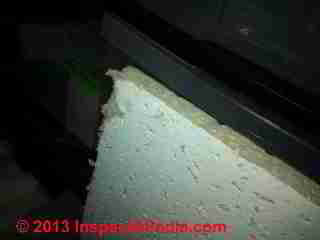 Was wondering if you could tell if these are likely asbestos ceiling tiles? The building was made in 1985 though I don't know the age of the tiles. They say "CON SAFE" on the back... They are in my workplace, a government building. - B.B.
Was wondering if you could tell if these are likely asbestos ceiling tiles? The building was made in 1985 though I don't know the age of the tiles. They say "CON SAFE" on the back... They are in my workplace, a government building. - B.B.Reply:
B.B.
While the current 1999 EPA notice basically retracted asbestos bans in the U.S., as we noted in the introduction to this article, because of consumer resistance to purchasing asbestos-containing material (ACM) for housing or office finish products, it's not likely that an office put up in 1985 used ACM.
Unfortunately, a responsible and reliable reply is that one can't know for sure when a material was made nor what it contains simply from your photo - you'd need to have a little sample of the material tested by a certified asbestos testing lab for a definitive answer.
Question: is cleaning up dust after improper asbestos removal dangerous
How dangerous is it to clean up an area after asbestos tiles were removed without proper equipment or disposal? What is required to be safe during clean-up? - Darlene 1/21/2013
Reply: quite possibly
Darlene: in my OPINION the answer is at least potentially YES.
If asbestos containing material, particularly friable materials such as ceiling tiles, or any ACM that was removed in a manner that created dust was removed without proper dust containment and follow-up testing, there could be high enough levels of asbestos in remaining dust in the building to be a hazard to occupants.
For example, running an ordinary household (non-HEPA) vacuum cleaner, or even a HEPA rated vacuum if it leaks, would send that asbestos-containing dust into the air - where occupants may indeed breathe it.
In my own experience I've encountered this problem a number of times and often follow-up testing confirmed that further professional cleaning was needed.
Provided that there is an established need (and thus justification of the expense) for an asbestos dust cleanup, a professional will set up dust containment to keep other building areas safe from dust, use a negative air machine as part of that containment, then typically s/he will HEPA vacuum and damp wipe the building surfaces.
A follow-up test by a professional confirms that the cleanup was successful and that the containment system also worked.
Question: do these 16x32" ceiling tiles in a 1941 home contain asbestos?
We are buying a house built in 1941 that has 16"x32" ceiling panels glued to the rafters in every room (photo attached).
Leaks from the roof have damaged many of them and we need to know whether they contain asbestos before we disturb the area. Are asbestos testing kits from a hardware store a legitimate way to go? - C.H. 4/18/2013
Reply:
Dear C.H.
No one should pretend that they could reliably identify or exclude asbestos-containing material in your building or its ceiling from just your photo, but I certainly understand and appreciate the question.
There are certainly ceiling tiles that do contain asbestos, and others even of the same era (up to the 80's) that do not. Sometimes one can look at the material by eye and see that it is a wood fiber product; but if you don't know, leave it alone until you do.
From the dimensions you gave and from your photo, I'm not 100% sure you are looking at acoustic ceiling tiles, though I agree that the beveled edges in a closer look at your picture look like glue-up or staple-up ceiling tiles not plaster. For comparison
As you suspect possible asbestos I suggest:
- First: do not make a dusty mess and don't perform demolition nor run vacuum cleaners (unless HEPA rated) before you know what materials are present
- Second: as demolition is required, you might want to contact a certified asbestos testing laboratory for sample collection advice and processing - typically it's a $50. or less cost.
I can't comment on an over-the-counter asbestos test kit - as honestly I just don't know what you were looking-at. Identification of asbestos dust or fibers in materials requires two kinds of microscopic examination; if the test kit is simply a container for a sample, along with safe sampling instructions, and that material is sent to a certified lab, perhaps that's fine.
At ASBESTOS TESTING LAB LIST we provide information on how to find a qualified, certified asbestos testing laboratory.
If there is access to the ceiling from above and if you can safely enter there and safely lift insulation for inspection, check, to see if those bulged or pillowed segments of the ceiling are visible from their upper side as plasterboard. [If you find vermiculite ceiling in the area don't disturb it because that may be an asbestos hazard even if the ceiling proves not to be.
Vermiculite building insulation was often poured into previously un-insulated ceilings of homes from the 1940's. Some vermiculite contains asbestos.
See details at VERMICULITE INSULATION
Keep us posted if you have the material tested or if you are able to explore the extent of water-related damage above this ceiling - what you find will assist other readers.
Question: Do You Think These Ceiling Tiles Contain Asbestos ? [photo attached]
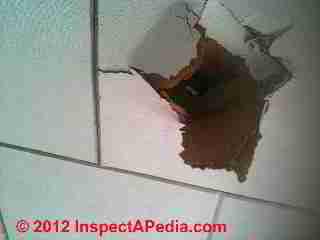
Do you think this contains asbestos? - Anonymous
Reply:
Your photos show what look like 9-inch or possibly 12-inch brown fiberboard acoustic ceiling tiles. While the predominant material in these ceilings is usually wood fibers, indeed up to the 1980's many such ceilings contained asbestos as well.
A competent onsite inspection by an expert usually finds additional clues that help accurately find where there are asbestos containing materials (ACM), presumed-asbestos containing materials (PACM), or what might also be called "asbestos-suspect materials".
That said, here are some things to consider:
For safety it makes sense to treat presumed-asbestos materials or PACM as if they indeed contained asbestos, meaning apply the same guidelines: leave intact materials alone if possible, encapsulate the material for added protection, and if materials are damaged, friable, or are likely to be disturbed by normal building activities, bring in a professional asbestos abatement contractor who, after confirming that the materials are asbestos-containing, will handle the removal or encapsulation with professional dust control, removal, cleaning.
For a single damaged ceiling tile such as in your photo, I'm doubtful that calling a professional asbestos abatement company will be justified, but if you treat the material as Presumed Asbestos Containing Material (PACM) that means using appropriate methods for cleanup and then encapsulation or covering of the damaged section.
Question: Do you think this Canadian acoustic ceiling tile is an asbestos material? I have chest pains since taking down this dusty mess.
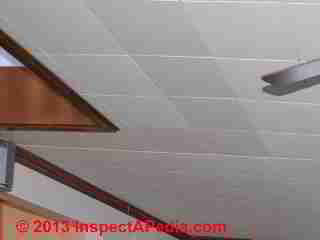 Hi i think these were installed in the mid 80's or even 90's. They are really dusty when removed them.
Hi i think these were installed in the mid 80's or even 90's. They are really dusty when removed them.
I removed them all about a month ago, sometimes i have some breathing chest mild problems but i think from painting and general reno dust. Are you familiar with these tiles in Ontario? - M. 11/28/12
Reply:
The tiles in your ceiling by dimension and general appearance could contain asbestos;
In my OPINION, even if the tiles didn't contain asbestos, exposing yourself to a high dose of dust can easily result in respiratory irritation and on occasion other health issues from rodent, insect, or other particles.
If you never checked with your doctor you should do so. I'd do that even before testing the material for asbestos.
Question: can we paint our asbestos-suspect ceiling tiles or do they have to be covered over?
We have square ceiling tiles in living room and bedroom that were probably installed in the 60's or 70's. The ceiling has been painted with a latex-type paint.
There are no friable areas, everything seems intact and covered with a layer of paint. Does this painting effectively prevent presumed asbestos fibers in the tiles (based on age) from entering the air and creating a hazard? Or should the ceilings be furred out and covered? - Edward, 12/3/2012
Reply:
If the ceiling is painted, not friable, not damaged, not in an area likely to be damaged, it's best to leave it alone. You don't need to install a new ceiling layer over it.
Additional asbestos-in-ceiling tiles questions and replies are in the FAQssection of this article.
Question: do you think these ceiling tiles contain asbestos
2019/12/28 Anonymous asked:
There was some dusting when drilling and removing the tiles (pictures attached) but they seem layered and feel like bunch of sheets of thick brown paper stuck together.
Upon closer inspection, I do see the boards are made of bunch fo fibers. The house was built in the late ‘30s but I am not sure when the ceiling tiles were installed.
What’s your opinion on this? - by private email
Reply: Asbestos is unlikely as this looks like a cellulose (wood fibre) product.
Nobody is going to bet your health and safety on simply an e-text and some photos, but what I can see looks like a wood fiber type ceiling product.
You'd have to either know more (country, city ceiling tile age (probably newer than your 1930's building), and any manufacturer identification markings) - OR you'd need to have a sample tested.
Information you may also want to see is at SHEATHING, FIBERBOARD ASBESTOS CONTENT
Reader follow-up: the ceilingtiles shown here do not contain asbestos
Thanks for getting back to me. I did take a sample and send it in for testing.
I also got in touch with one of the previous owners who said she lived here (Denver) from 1985-1990 and she said the basement wasn’t finished then so I won’t know for sure until I get the lab results back but I think you’re right that they are just wooden fiber boards. I will keep you posted. - Anon
Moderator reply:
That's encouraging since 1985 is getting rather near the end of asbestos in such products in the U.S.
Reader Follow-up: 95% cellulose, 5% non-fibrous material.
Came back negative. 95% cellulose, 5% non-fibrous material. You were correct. Thanks.
Question:
2019/09/15 Lu Ka
Hello. Do you think those tiles contain asbestos? I have no info about them.
There was a water leak from the second floor bathroom through the tiles recently and they have been moved by the water as you can see in the picture. I was there when that happened. Do you think I may have been affected?
Reply:
Ka
I don't know what happened to your photo, perhaps I accidentally deleted it; I'd be grateful if you'd post it again.
Most likely we can't say from a photo alone whether or not a ceiling tile contains asbestos unless we know more such as the manufacturer, product identification, country, city, building age, ceiling age; Help in making a reasonable guess at an answer to your question about the asbestos probability is in the article above.
No one with any sense will claim that they can know whether or not you've been somehow affected by a ceiling based on a brief e-text.
However if there is asbestos suspect material AND if a dusty mess was made during demolition or repairs such that dust was distributed into occupied space, then additional cleanup and perhaps testing would be in order.
How to Remove Asbestos or Asbestos-suspect Ceiling Tiles Safely
Procedure for removing hardboard asbestos ceiling tiles
Procedure for Removing an Asbestos-Suspect Suspended Ceiling
Procedure for Removing a single (screwed-in) asbestos insulating board (AlB) ceiling tile
Asbestos Ceiling Tile Removal Procedure Standards & Guidelines
Do 2' x 4' Armstrong Ceiling Panels made in 1976 contain Asbestos? See details at ARMSTRONG CEILING TILES
Do Boise Cascade Ceiling Tiles Contain Asbestos? This discussion moved to BOISE CASCADE CEILING TILES
Do some Celotex® ceiling tiles contain asbestos? For details and for a list of Celotex insulating products believed to contain asbestos - see CELOTEX ASBESTOS PRODUCTS
Do Domtar® Ceiling Tiles or Drywall Contain Asbestos? Moved to DOMTAR CEILING TILES
Asbestos hazard in FRF ceiling tiles? - This discussion moved to FRF CEILING TILES
Johns Manville Ceiling Tiles & Wall Panels - asbestos? - See details at JOHNS MANVILLE CEILING & WALL PANELS
Do Sears Roebuck & Co. Ceiling Tiles Contain Asbestos? This discussion has moved to SEARS ROEBUCK CEILING TILES
Simpson Forestone Woodfiber Acoustic Ceiling Tiles - This discussion moved to its own page at SIMPSON CEILING TILES
...
Continue reading at DO THESE CEILING TILES CONTAIN ASBESTOS? , or select a topic from the closely-related articles below, or see the complete ARTICLE INDEX.
Or see ASBESTOS CEILING TILE FAQs - questions and answers posted originally at the bottom of this page.
Or see this
Suri say
🏠 This is a repost from inspectApedia.
🏠 InspectAPedia.com® - is a free online encyclopedia of building & environmental inspection, testing, diagnosis, repair, & problem prevention advice, covering all residential & light commercial building components, materials, & mechanical systems.
🏠 Malaysia have yet ban the use of asbestos in construction. Most low-cost house in Malaysia still using asbestos.
🏠 When doing renovation usually contractor will suggest using asbestos as it is a cheaper option. But it is better to spend more for a safer choice.
🏠 Be careful with construction waste as it may contain hazards. Dont just let it unmanage and dispose it appropriately.
🏠 Hopes if Malaysia will ban the use of asbestos since it is quite dengerous but widely use because of its cheaper price and mostly people didnt know its danger.
🏠 Hopes if Malaysia will ban the use of asbestos since it is quite dengerous but widely use because of its cheaper price and mostly people didnt know its danger.
🏠 Below are some pictures of asbestos materials commonly use in Malaysia and a better alternative to replace it.
Asbestos roof
[Credit]
Zinc roof is a better alternative
Asbestos Ceiling
[Credit]
Playwood is a better choice of ceiling

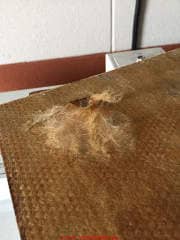
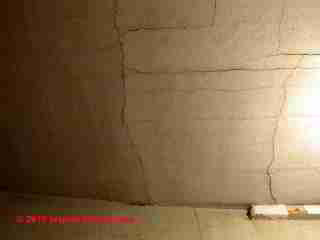
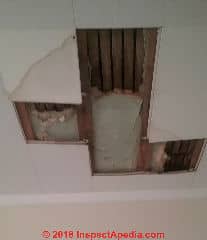
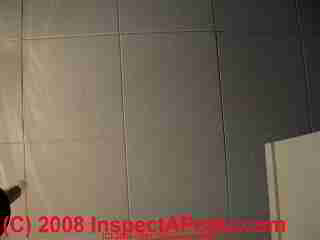
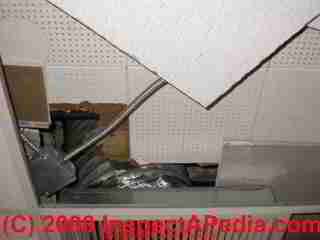
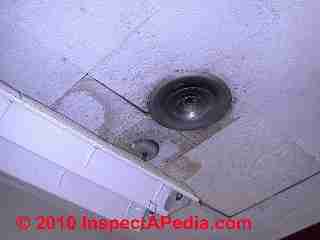
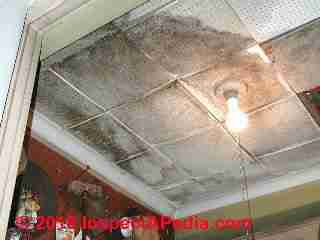
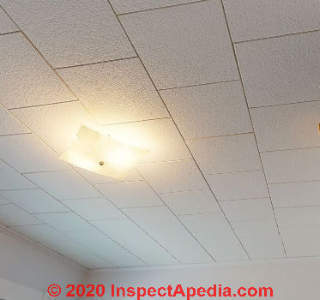

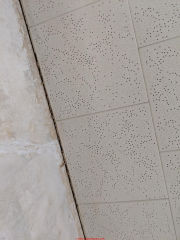
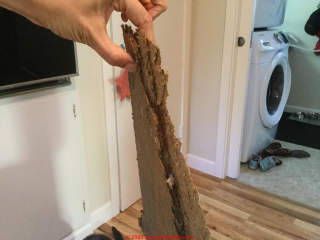
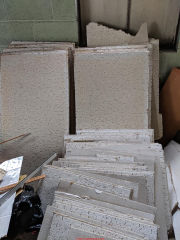
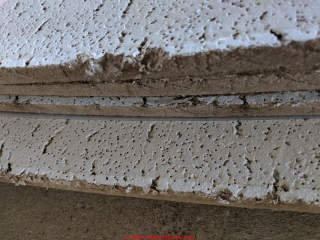
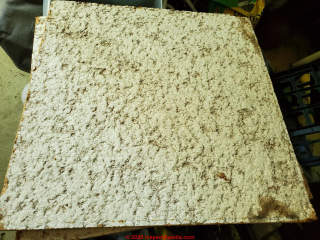
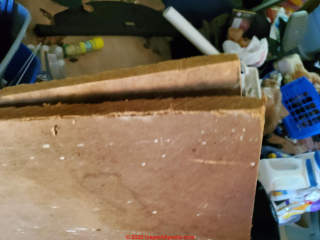
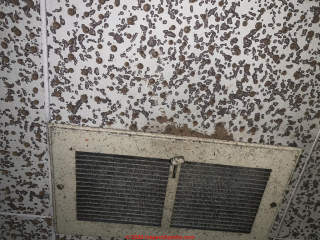
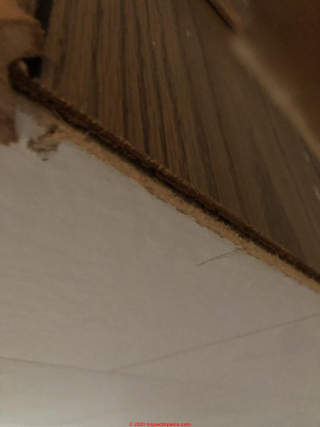

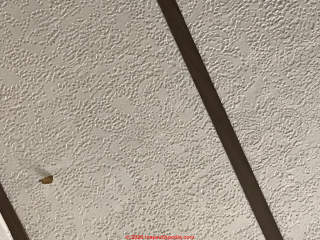

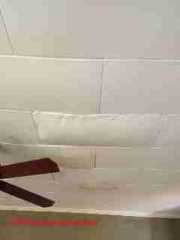

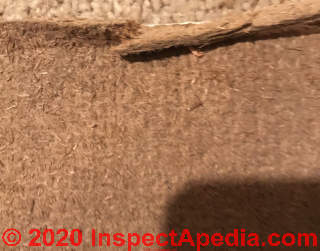
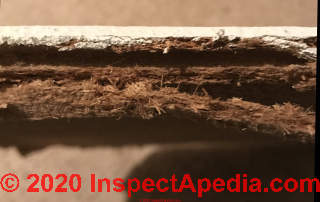




No comments:
Post a Comment